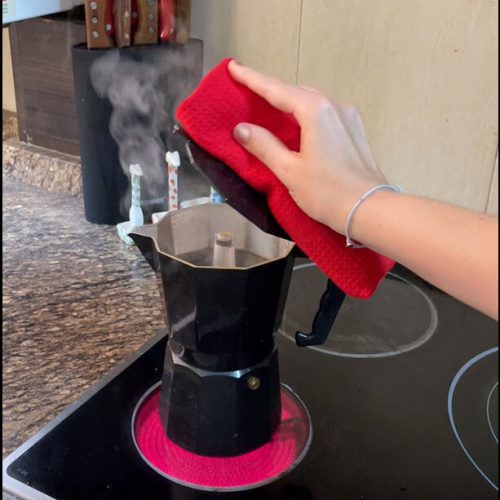
How to Make: Spanish-Style Coffee at Home
Please Note: This post contains affiliate links to products, Which means that we may receive a commission for purchases. For more information, see our disclosures here. Thanks for your support!
Dear Oli,

Spend just a little bit of time in Spain and you will find that the coffee culture here is super different than the United States, as well as most other countries. Personally, we find it to be a lot better! As people who didn’t start drinking coffee until living abroad in Spain, it is really hard to compare the rich and full experience you get when drinking coffee here to the tried-and-true but kinda bland way we do it back home (we’re looking at you drip-coffee in the US and instant coffee in the UK!).
So, now that we’ve potentially offended you, let us clarify a bit. The café con leche culture that you will find on the streets of Spain isn’t perfectly replicated at home―unfortunately we cannot all afford at-home espresso-makers―but coffee preparation is still a respected process. Although you can purchase a ‘normal’ American coffee-maker or British-style electric kettle in certain electronics stores, these are far from ‘normal’ to Spaniards. We can almost guarantee you that your host family and/or Spanish friends will not have one (nor have ever used one, for that matter).
Instead, the norm is stovetop percolators known as cafeteras italianas or simply cafeteras for short. Additionally, this method of brewing coffee is even different from the average stovetop percolator that some people use in the US, so let us walk you through the basics (in laymen’s terms because, we promise you, we are far from coffee connoisseurs*). We break down the steps in this quick video, but if you’re someone who prefers written instructions, we cover the full process below.
How to Make Spanish-Style Coffee at Home, Step-by-Step:
1.) The cafetera consists of three parts, as shown below. In order to prepare the coffee, unscrew the top and bottom portion, remove the middle one, and fill the lower receptacle with water, no higher than the notch you will notice from the air hole.
Tip: If you happen to have an electric kettle (unlikely if you’re in the average Spanish home), you could get stealthy and heat the water up first in order to reduce the time it takes for the coffee to boil.
 2.) Plop the middle section back on top of the bottom receptacle (if you notice that you filled the bottom with a bit too much water, empty the excess out now, otherwise it will be boiling out as coffee!). Fill this with ground coffee, no filter paper necessary.
2.) Plop the middle section back on top of the bottom receptacle (if you notice that you filled the bottom with a bit too much water, empty the excess out now, otherwise it will be boiling out as coffee!). Fill this with ground coffee, no filter paper necessary.
Tip: The amount of grounds you add, obviously, correlates with the richness and strength of your coffee so if you want a less pungent taste, simply add less grounds. Regardless of how high you fill this section, be sure to press the coffee grounds down somewhat tightly for optimal quality. (We don’t actually know why, but everyone says this is important.)
3.) Tightly screw the top bit to the bottom half. This is crucial to avoid boiling-hot coffee spraying or dripping out the sides of the cafetera as it tries to travel up through the grounds.
Tip: Regardless of how tightly you screw them back together, cafeteras still tend to drip from one area or another if you pour your coffee too quickly. Just like most things in Spain, have patience and pour your coffee slowly from an arched angle, as shown in the top photo.
 4.) Heat it up on an appropriate-sized stovetop burner on medium-to-high heat until the water boils up through the grounds, spilling over the middle fountain-like section as tasty coffee!
4.) Heat it up on an appropriate-sized stovetop burner on medium-to-high heat until the water boils up through the grounds, spilling over the middle fountain-like section as tasty coffee!
Tip: Every cafetera is different―some are just starting to boil up when they begin to make noise whereas others are finished when you notice this bubbling sound. Stay alert and keep an eye on it, especially for the first few times. Be cautious if you open up the top to check―it’ll be hot!
5.) And voila! You’ve done it, your first cup of home-brewed cafetera coffee! Of course, the perks of making it at home instead of ordering out is that you can make your coffee however you please, so have at it!
Tip: If you attempt to recreate café con leche, I recommend heating the milk up first. If you forget (as, honestly, I usually do), you’ll likely need to heat up the final coffee as the cold milk evens out the boiling hot coffee to just lukewarm.
So what do you think, are you ready to give it a try or do you still have some reservations? Have you already used a cafetera? If so, you simply must tell us how your first attempt went!** Can’t wait to hear how it goes!
Sincerely,
Spain
 P.S. Oh! And don’t forget, our Italian friends swear that you simply can NOT wash your cafetera with soap! Apparently it never fully comes off and leaves an aftertaste in your coffee. Instead, you should simply rinse all of the parts with warm water, using a cloth or sponge to remove any burnt-on coffee (staining is normal).
P.S. Oh! And don’t forget, our Italian friends swear that you simply can NOT wash your cafetera with soap! Apparently it never fully comes off and leaves an aftertaste in your coffee. Instead, you should simply rinse all of the parts with warm water, using a cloth or sponge to remove any burnt-on coffee (staining is normal).
*For those of you who are, we apologize in advance for the lack of expert terminology, but we figured that we’d break it down in the simplest of terms so even newbies like us can easily follow along!
**If we’re being completely honest, the first time Dani made this kind of coffee she attempted to do so without any instructions and actually filled the top section, not the bottom, with water…so this is a judgement-free zone, haha!

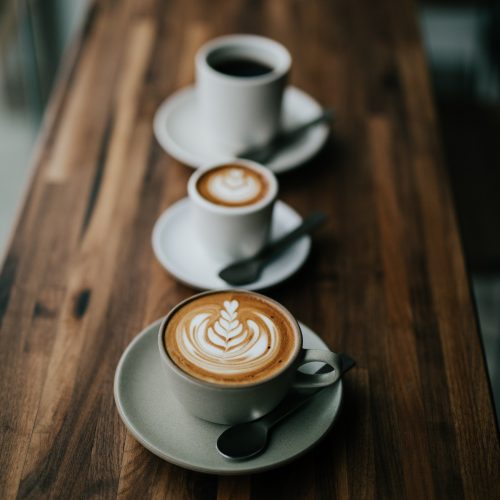
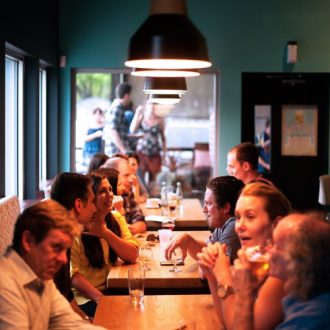
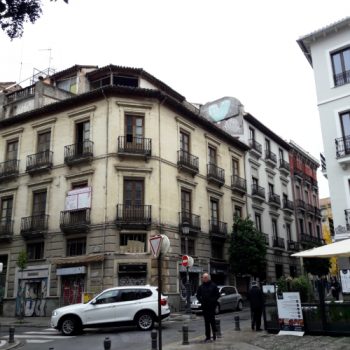
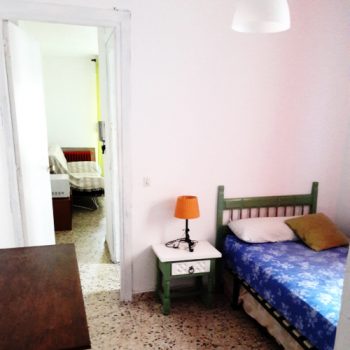
2 Comments
Ally
Thank you for this article! I just made my first successful cup of coffee after making the same mistake of putting water in at the top. I’ve been in Spain for a month and have been using the cafetera to heat hot water for tea because I had know idea how to make coffee with it!